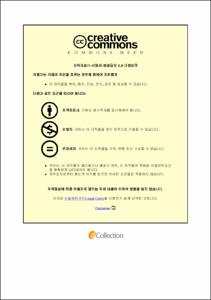The histological effects of a bioenergy water on degenerated adductor muscles in cultured juvenile abalone, Haliotis discus hannai
- Alternative Title
- 양식 전복치패 변성 폐각근에 미치는 바이오 기능수의 조직학적 영향
- Abstract
- This study was conducted to examine the recovery of degenerated adductor muscles in juvenile abalone (Haliotis discus hannai) which were cultured in bioenergy water for four weeks. Juvenile abalones having average total weight 40.76±24.23 g, shell weight 10.99±7.14 g, shell length 4.87±0.64 cm, shell width 0.96±0.20 cm, and height 3.37±0.48 cm, were fetched from an abalone farm, south Jeola Province Wando County, Republic of Korea. Juvenile abalones were divided into two groups, i.e., treatment and control group. General sea water was used in control whereas bioenergy water was used in treatment groups. Five samples, in all, were collected randomly with (n=8) individuals in each sampling. Juvenile abalones were dissected, fixed and refixed (in 10%formalin). Adductor muscles were chopped, then dehydrated for tissue processing (in 70-100% ethyl alcohol) and embedded with paraffin wax (58-62oC). Thin (4μm) ribbons of embedded tissues were obtained using rotatory microtome which were then stained with Haematoxylin and Eosin (H&E method) and preceded for light microscopy finally. In the first sample (0 weeks), adductor muscles showed atrophy (necrosis).In the second sample (1 week after applying bioenergy water), there was a great improvement in muscle histology. Muscle fiber histology recovered completely in the third sample (2 weeks after applying bioenergy water). Lesions (swelling) disappeared in the fourth and the fifth samples too (3 and 4 weeks after applying bioenergy water).The adductor muscles recovered because of immunopotentiating characteristics of bioenergy water that sustained its normal structure. Results of this study suggest that bioenergy water can cure the degenerated adductor muscles of juvenile abalone.
- Issued Date
- 2018
- Awarded Date
- 2018.2
- Type
- Dissertation
- Publisher
- 부경대학교
- Affiliation
- 부경대학교 글로벌수산대학원
- Department
- 글로벌수산대학원 국제수산과학협동과정
- Advisor
- 허민도
- Table Of Contents
- Tables of contents i
List of Figures iv
List of Tables vii
Abstract viii
I. Introduction 1
II. Materials and Methods 7
1. Study site 7
2. Experiment design 7
3. Sample collection 8
4. Histological methods 8
4.1 Dissection 9
4.2 Fixation and Re-fixation 9
4.3 Tissue processing 9
4.4 Wax embedding 9
4.5 Sectioning 10
4.6 Staining 10
4.7 Mounting 12
5. Photography 12
6. Anatomical examination 12
7. Histological evaluation 12
III. Results 15
1. First sample 15
1.1 Anatomical measurement 15
2. Second Sample 20
2.1 Anatomical measurement 20
2.2 Juveniles’ adductor muscle histology evaluation 22
2.2.1 Abalones in general water group 22
2.2.2 Abalone in bio-energy water group 22
3. Third Sampling 25
3.1 Anatomical measurement 25
3.2 Juveniles’ adductor muscle histology evaluation 27
3.2.1 Abalone in general water group 27
3.2.2 Abalone in bio-energy water group 27
4 Fourth sampling 30
4.1 Anatomical measurement 30
4.2 Juveniles’ adductor muscle histology evaluation 32
4.2.1 Abalone in general water group 32
4.2.2 Abalone in bio-energy group 32
5 Fifth sampling 35
5.1 Anatomical measurement 35
5.2 Juveniles’ adductor muscle histology evaluation 37
5.2.1 Abalone in general water group 37
5.2.2 Abalone in bio-energy group 37
IV. Discussion 41
V. Acknowledgement 47
VI. References 49
- Degree
- Master
- Appears in Collections:
- 글로벌수산대학원 > 국제수산과학협동과정
- Files in This Item:
-
-
Download
 The histological effects of a bioenergy water on degenerated adductor muscles in cultured juvenile a.pdf
기타 데이터 / 899.07 kB / Adobe PDF
The histological effects of a bioenergy water on degenerated adductor muscles in cultured juvenile a.pdf
기타 데이터 / 899.07 kB / Adobe PDF
-
Items in Repository are protected by copyright, with all rights reserved, unless otherwise indicated.